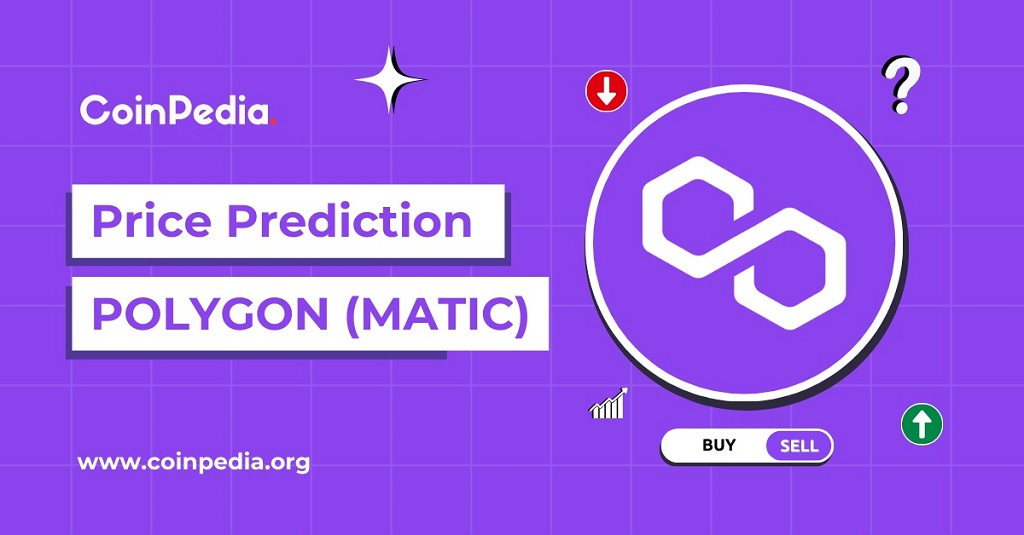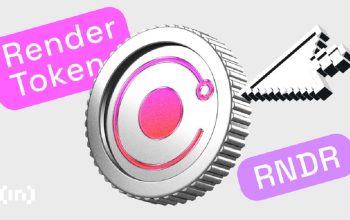Polygon, formerly known as Matic Network, has emerged as a leading Layer-2 scaling solution for Ethereum, addressing its scalability issues and high transaction fees. By bundling transactions and processing them off-chain before submitting them to the Ethereum mainnet, Polygon significantly enhances speed and reduces costs, making it a popular choice for developers and users alike.
But what does the future hold for Polygon? Can this innovative platform continue its upward trajectory and reach new heights in the next decade? In this comprehensive article, we delve deep into Polygon’s potential, analyze its strengths and weaknesses, and explore expert predictions for its price in 2030. Buckle up as we embark on a journey to uncover whether Polygon (MATIC) can hit the coveted $100 mark by the end of the decade.
Polygon (MATIC): A Brief Overview

Before we dive into price predictions, let’s recap what Polygon is and how it works. Polygon is a Layer-2 scaling solution that aims to improve the functionality of the Ethereum blockchain by increasing its transaction throughput and reducing transaction fees. It achieves this through a combination of technologies, including:
- Proof-of-Stake (PoS) sidechains: Polygon operates its own PoS sidechains, which run parallel to the Ethereum mainnet. These sidechains process transactions independently, significantly increasing throughput.
- Plasma framework: Polygon leverages the Plasma framework, a scaling solution that allows for the creation of child blockchains that periodically submit their transaction data to the Ethereum mainnet.
- Optimistic rollups: This technology executes transactions off-chain but maintains data on the Ethereum mainnet, ensuring security and decentralization.
By combining these technologies, Polygon offers a robust and scalable solution for developers looking to build decentralized applications (dApps) on Ethereum without being hindered by its limitations.
Polygon’s Strengths: Fueling the Growth
Polygon’s rise to prominence is no accident. Several factors contribute to its strong foundation and potential for future growth:
- Scalability: Polygon’s primary strength lies in its ability to address Ethereum’s scalability woes. By processing transactions off-chain, it significantly reduces congestion and allows for faster and cheaper transactions.
- Interoperability: Polygon is designed to be interoperable with Ethereum, allowing developers to easily migrate their existing dApps or build new ones that can seamlessly interact with the Ethereum ecosystem.
- Developer-friendly: Polygon provides a comprehensive suite of developer tools and resources, making it easy for developers to build and deploy dApps on the platform.
- Strong community: Polygon boasts a vibrant and growing community of developers, users, and validators, contributing to its ongoing development and adoption.
- Growing ecosystem: Polygon’s ecosystem is rapidly expanding, with numerous projects and dApps choosing to build on the platform, further increasing its value and utility.
These strengths position Polygon as a key player in the blockchain space, with the potential to drive significant innovation and growth in the years to come.
Polygon’s Challenges: Navigating the Road Ahead
While Polygon has a lot going for it, it also faces some challenges that could impact its future growth:
- Competition: The blockchain space is highly competitive, with numerous other Layer-2 scaling solutions vying for market share. Polygon needs to continuously innovate and improve to stay ahead of the curve.
- Security concerns: While Polygon has a strong security track record, any Layer-2 solution inherently relies on the security of the underlying blockchain (Ethereum). Any vulnerabilities in Ethereum could potentially affect Polygon as well.
- Ethereum 2.0: The upcoming Ethereum 2.0 upgrade, which aims to address scalability issues directly on the Ethereum mainnet, could potentially reduce the need for Layer-2 solutions like Polygon. However, Polygon is actively adapting and evolving to remain relevant in the Ethereum 2.0 ecosystem.
- Regulatory uncertainty: The regulatory landscape for cryptocurrencies and blockchain technology is still evolving, and any unfavorable regulations could impact Polygon’s growth and adoption.
Despite these challenges, Polygon’s team is actively working to address them and ensure the platform’s continued success.
Polygon (MATIC) Price History: A Look Back
Before we delve into future predictions, let’s take a quick look at Polygon’s price history:
- Early Days (2019-2020): Polygon, then known as Matic Network, launched in 2019 with a relatively low profile. Its price remained relatively stable throughout 2019 and early 2020.
- The Rise (2021): Polygon gained significant traction in 2021, fueled by the growing popularity of decentralized finance (DeFi) and non-fungible tokens (NFTs). Its price surged to an all-time high of $2.92 in May 2021.
- The Correction (2022): Like most cryptocurrencies, Polygon experienced a significant price correction in 2022, falling to around $0.32 in June 2022.
- Recovery and Consolidation (2023): Polygon showed signs of recovery in 2023, with its price stabilizing and showing gradual growth.
This historical data provides valuable context for understanding Polygon’s price movements and setting realistic expectations for the future.
Polygon (MATIC) Price Prediction 2030: Expert Opinions and Analysis
Predicting cryptocurrency prices is notoriously difficult, but several experts and analysts have offered their insights into Polygon’s potential price in 2030. These predictions vary widely, but they generally paint a positive picture for Polygon’s long-term growth:
- CoinPriceForecast: This platform predicts that MATIC could reach $12.87 by 2030, indicating significant growth from its current price.
- DigitalCoinPrice: This website forecasts a more conservative price of $6.49 for MATIC in 2030, still representing a substantial increase.
- Gov Capital: This platform provides a more bullish prediction, suggesting that MATIC could reach $22.77 by the end of the decade.
It’s important to remember that these are just predictions, and the actual price could be higher or lower depending on various factors. However, these forecasts provide a general idea of the potential growth trajectory for Polygon.
Factors Influencing Polygon’s Price in 2030
Several factors could influence Polygon’s price in 2030:
- Ethereum’s Success: As a Layer-2 solution for Ethereum, Polygon’s success is closely tied to Ethereum’s performance. If Ethereum continues to thrive and maintain its dominance in the smart contract space, Polygon is likely to benefit as well.
- Adoption by Developers: The wider adoption of Polygon by developers and the growth of its ecosystem will play a crucial role in driving its price upwards.
- Partnerships and Integrations: Strategic partnerships and integrations with other blockchain projects and companies could further enhance Polygon’s value and utility.
- Market Sentiment: The overall sentiment in the cryptocurrency market can significantly impact prices. Positive sentiment and increased investor confidence could drive Polygon’s price higher.
- Technological Advancements: Continued innovation and technological advancements within the Polygon ecosystem could attract more users and investors, further boosting its price.
By carefully considering these factors, we can gain a better understanding of the potential price trajectory for Polygon in the years to come.
Read More Also: How to start a business with no money
Can Polygon (MATIC) Reach $100 by 2030?
While some analysts are bullish on Polygon’s long-term prospects, reaching $100 by 2030 seems like a stretch goal. Several factors would need to align perfectly for this to happen:
- Massive adoption: Polygon would need to achieve widespread adoption, not just within the crypto space but also in mainstream industries.
- Ethereum dominance: Ethereum would need to maintain its position as the leading smart contract platform, with Polygon playing a crucial role in its scalability.
- Significant network effects: Polygon’s ecosystem would need to grow exponentially, with a vast number of dApps and users relying on its infrastructure.
- Limited competition: Polygon would need to outperform its competitors and establish itself as the go-to Layer-2 solution.
- Favorable market conditions: A sustained bull market in the cryptocurrency space would be necessary to support such a significant price increase.
While reaching $100 by 2030 might be a long shot, it’s not entirely impossible. If Polygon continues to innovate and execute its roadmap effectively, it could achieve significant price appreciation in the coming years.
Polygon (MATIC) Reviews: What Users Are Saying
Polygon has garnered largely positive reviews from users and developers alike. Here are some common themes that emerge from user feedback:
- Fast and affordable transactions: Users appreciate the speed and low cost of transactions on Polygon, compared to Ethereum mainnet.
- Easy to use: Polygon’s user-friendly interface and tools make it accessible to both experienced and novice users.
- Strong community support: The Polygon community is known for its helpfulness and responsiveness, providing assistance to users and developers.
- Growing ecosystem: Users are excited about the growing number of dApps and projects building on Polygon, offering a wide range of functionalities.
However, some users have also expressed concerns about:
- Occasional network congestion: While Polygon generally offers fast transactions, some users have experienced occasional congestion during peak usage times.
- Dependence on Ethereum: Some users worry about Polygon’s reliance on Ethereum’s security and the potential impact of any vulnerabilities in the underlying blockchain.
Overall, user reviews indicate that Polygon is a well-regarded platform with a strong foundation and a growing user base.
Polygon (MATIC): Pros and Cons
Pros:
- Scalability: Offers significantly faster and cheaper transactions compared to Ethereum.
- Interoperability: Seamlessly integrates with the Ethereum ecosystem.
- Developer-friendly: Provides a comprehensive suite of tools and resources for developers.
- Strong community: Boasts a vibrant and supportive community.
- Growing ecosystem: Attracting a wide range of dApps and projects.
Cons:
- Competition: Faces competition from other Layer-2 solutions.
- Security concerns: Relies on the security of the underlying Ethereum blockchain.
- Ethereum 2.0: The upcoming Ethereum upgrade could potentially reduce the need for Layer-2 solutions.
- Regulatory uncertainty: The evolving regulatory landscape could impact its growth.
By weighing these pros and cons, investors can make informed decisions about whether to invest in Polygon.
Polygon (MATIC) FAQ
- What is the purpose of Polygon (MATIC)?
Polygon aims to improve the scalability and usability of the Ethereum blockchain by providing a framework for building and connecting Ethereum-compatible blockchains.
- How does Polygon work?
Polygon utilizes a combination of technologies, including PoS sidechains, the Plasma framework, and optimistic rollups, to process transactions off-chain and reduce congestion on the Ethereum mainnet.
- What are the use cases for Polygon?
Polygon is used for a wide range of applications, including DeFi, NFTs, gaming, and decentralized applications (dApps).
- Where can I buy Polygon (MATIC)?
MATIC is available on most major cryptocurrency exchanges, such as Binance, Coinbase, and Kraken.
- Is Polygon a good investment?
Polygon has strong fundamentals and a growing ecosystem, making it a potentially attractive investment. However, like any cryptocurrency, it carries risks, and investors should conduct thorough research before investing.
- What is the future of Polygon?
Polygon is actively developing and evolving its technology to remain a key player in the blockchain space. Its future success will depend on factors such as Ethereum’s performance, adoption by developers, and the overall growth of the cryptocurrency market.
Conclusion: Polygon’s Journey to the Future
Polygon has emerged as a leading Layer-2 scaling solution for Ethereum, offering a robust and scalable platform for developers and users. Its strengths lie in its ability to address Ethereum’s scalability limitations, its interoperability with the Ethereum ecosystem, and its growing community and ecosystem.
While challenges such as competition and regulatory uncertainty remain, Polygon’s team is actively working to overcome them and ensure the platform’s continued growth. Predicting the price of any cryptocurrency is inherently difficult, but expert opinions and analysis suggest that Polygon has the potential for significant price appreciation in the coming years.
Whether Polygon (MATIC) reaches $100 by 2030 remains to be seen. However, its strong fundamentals, growing ecosystem, and commitment to innovation position it as a promising project with the potential to shape the future of the blockchain space. As always, investors should conduct thorough research and assess their risk tolerance before investing in any cryptocurrency.




